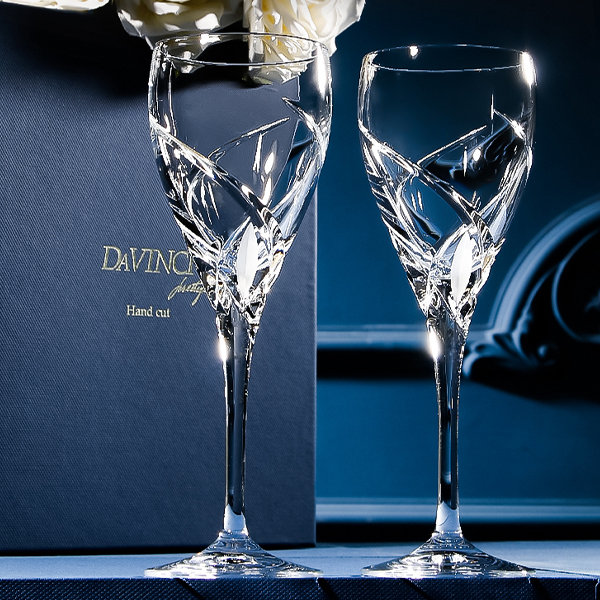When it comes to sipping that effervescent delight or savoring a full-bodied red, the debate between champagne glasses and wine glasses tends to bubble over with enthusiasm. At first glance, one might wonder: does the type of glass truly matter? Beyond mere aesthetics, the choice of glass influences not only the drinking experience but also the sensory perception of the beverage itself. This article delves into the intricacies of glassware, examining the nuances that set champagne glasses apart from wine glasses.
To appreciate the differentiation between these two types of glassware, one must first consider their design. Champagne glasses, whether they be the classic flute or the more modern coupe, are crafted with a specific purpose in mind. The elegant flute, with its tall, narrow shape, is primarily designed to preserve the effervescence of sparkling wines. The narrow opening allows the bubbles to concentrate and rise, delivering a burst of aroma that enhances the drinking experience. Meanwhile, the coupe, with its shallow bowl, offers a more open surface area, allowing for a wider aroma range. It evokes a sense of vintage glamour, oftentimes associated with celebrations and joie de vivre.
On the other hand, wine glasses boast a variety of shapes tailored for different types of wines. Red wines often find solace in a wide bowl that promotes aeration, allowing their complex flavors and aromas to blossom. White wine glasses, in contrast, typically feature a smaller bowl and narrower opening, designed to keep the wine chilled while still presenting a bouquet of aromas. The diversity among wine glasses embodies an intricate dance of form and function, emphasizing not just the appearance but also the experience of what’s inside.
But how does the choice of glass affect what we taste? Science offers insight that goes beyond mere opinion. The shape of the glass alters how we perceive the aroma and taste of the wine or champagne. Studies indicate that our sense of smell, which is closely tied to taste, is significantly influenced by the glass’s design. With a champagne flute, the vertical orientation directs aromas to our nose effectively, amplifying that crisp, refreshing essence we associate with bubbles. In contrast, a wine glass with a wider bowl captures more volatile aromas, enhancing the flavor profile and complexity of red and white wines alike. The shape becomes a silent advocate for the wine or champagne it cradles.
However, we must acknowledge the subjective nature of taste. While experts may swear by specific glassware, personal preference plays a vital role in the enjoyment of a drink. Some may argue that the euphoria derived from enjoying a well-chilled bubbly in a flute stems more from ritualistic visual and tactile pleasure than from the science of aromas. After all, the elegant curve of a champagne flute combined with the glistening bubbles creates an intoxicating aesthetic that is hard to resist.
Additionally, let’s not overlook the broader context of social settings. The ambiance, the company, and the occasion undeniably shape our drinking experience. Consider a jubilant celebration: clinking champagne flutes, revelry, and laughter infuse the moment with joy. In a rustic vineyard setting, relaxing with a glass of red wine from a finely crafted wine glass invites a different sort of intimacy, perhaps enhancing the aromatic journey of the wine due to the slower pace of savouring each sip. In these scenarios, the glass becomes a vessel not just for the liquid but for memories and emotions, enriching the sensory experience in ways that transcends mere consumption.
Furthermore, one should consider the practicality factor. Champagne flutes may be quintessential for serving champagne at formal occasions, yet they can be impractical for casual gatherings when mingling requires ease of handling. Conversely, wine glasses tend to be more versatile, seamlessly transitioning from an informal setting to a more sophisticated affair. The durability and ease of storage also play a role; stemless wine glasses are becoming increasingly popular for their nonchalant elegance, serving both function and fashion with gusto.
Ultimately, the crux of the matter revolves around how one wishes to engage with their drink. For the connoisseur, selecting the appropriate glass can elevate their experience to magnificent heights. For the casual enthusiast, any glass that holds a beloved beverage may suffice. The choice between a champagne glass and a wine glass transcends the physical attributes of the vessels; it speaks to the essence of enjoyment, the atmosphere, and the shared moments that are woven within the fabric of culinary experiences.
In conclusion, while the age-old question of champagne glass versus wine glass may not have a definitive answer, the exploration reveals a wealth of consideration that enhances our understanding of wine culture. Each glass has its advantages, its character, and its story—factors that undeniably contribute to our enjoyment. Whether you choose the delicate curves of a flute or the inviting bowl of a wine glass, the most important aspect is to relish each sip. After all, in the grand narrative of taste, the glass is merely a conduit for the exquisite elixirs that bring us together, join us in celebration, and create unforgettable memories.

